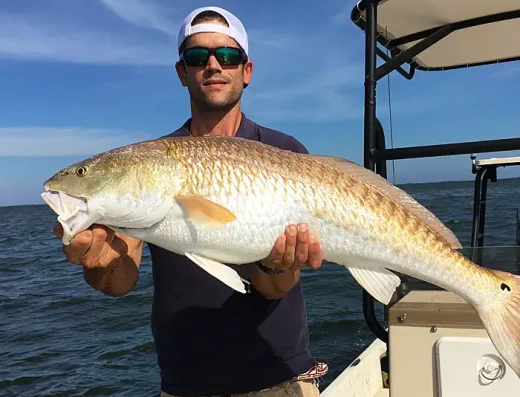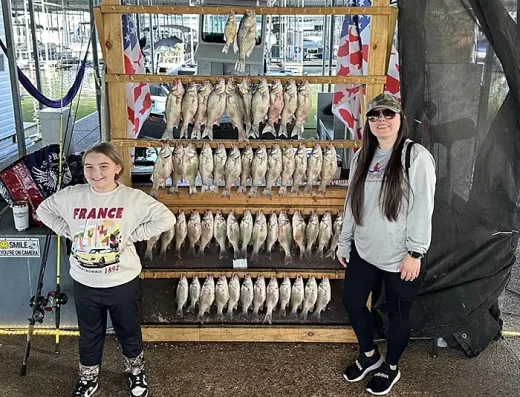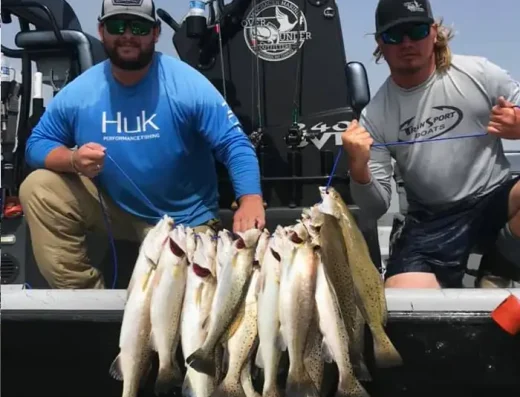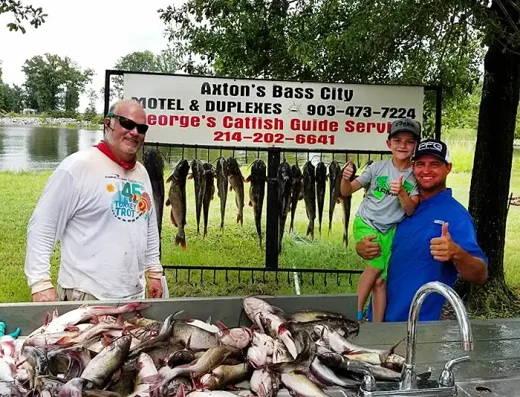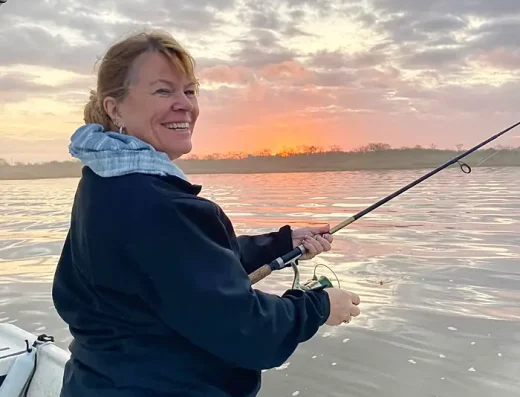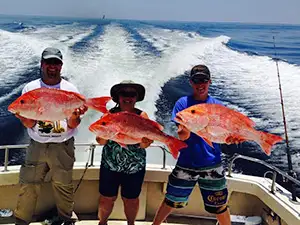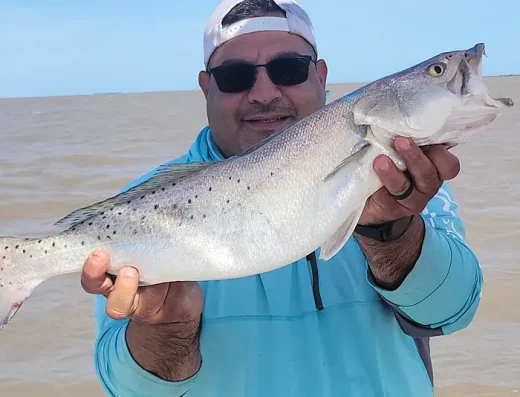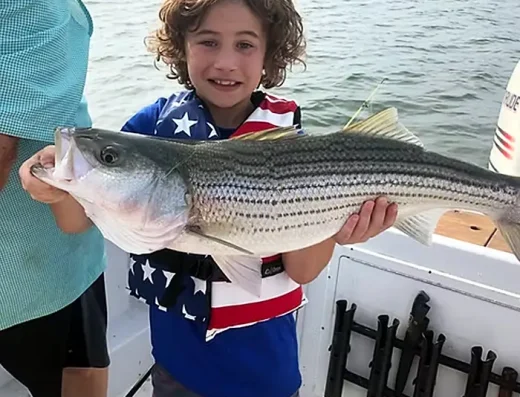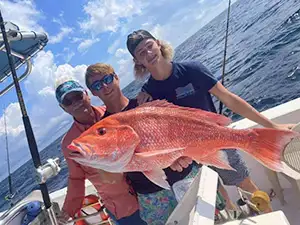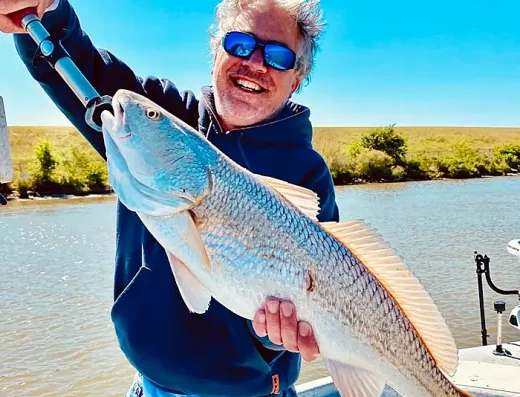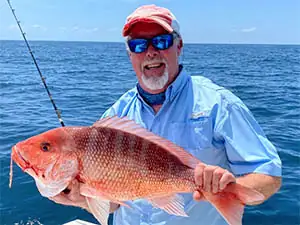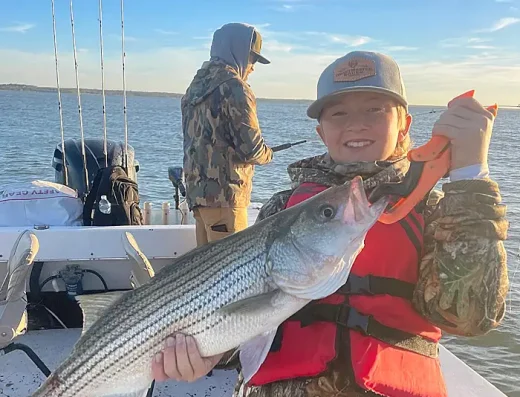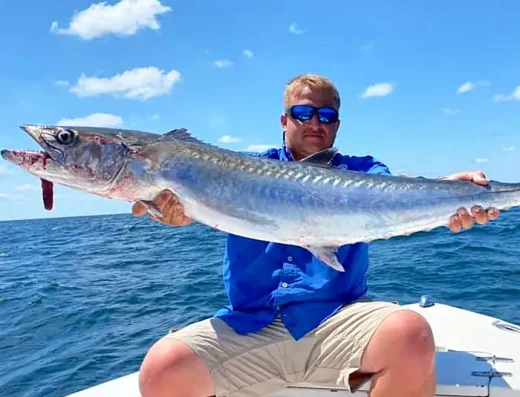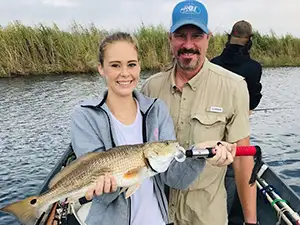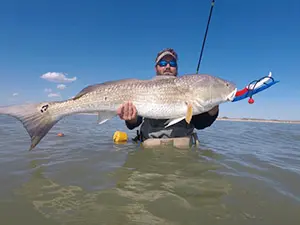Texas Fishing Charters
Texas fishing charters offer everything from shallow marsh redfish trips on the Gulf to trophy bass hunts on sprawling inland lakes.
TrustedFish connects anglers with proven local captains in Texas —no commissions, no pay-to-play listings, no BS. Every charter on our platform is invite-only, vetted for skill, local knowledge, and reputation. If they’re listed, they’ve earned it.
Top Rated Charters in Texas
Click to View Destinations
Texas Fishing Guide
Texas is a big state with serious range—offshore, inshore, lakes, and rivers, all with their own bite. On the coast, you’ve got places like Galveston, Port Aransas, and South Padre where inshore guides chase <strong>redfish</strong>, <strong>speckled trout</strong>, and <strong>flounder</strong> on shallow grass flats and oyster beds. Just offshore, snapper, kingfish, cobia, and mahi move through the rigs and nearshore structure, and longer runs get you into tuna, wahoo, and even marlin in the summer.
A lot of inshore trips are half-day, drifting live shrimp or paddletails under popping corks near the jetties or back lakes. For offshore, boats usually run 10–40 miles on full-day trips, depending on the season and target. Federal snapper opens in summer and pulls boats way out to deep reefs, while winter sees shorter runs for sheepshead, drum, and whiting.
Then there’s freshwater—some of the best in the country. Lakes like Sam Rayburn, Toledo Bend, and Fork are bass country, with guides running full-day trips with soft plastics, frogs, or live bait depending on conditions. West Texas has canyon lakes with striped bass and catfish, and up north you’ve got the Red River and Lake Texoma with hybrids and blue cats. Public ramps are everywhere, and bait shops usually carry live minnows, shrimp, and cut mullet depending on where you’re fishing.
Charters here cover just about every style—flats skiffs, bay boats, center consoles, big sportfishers, and bass boats. Texas doesn’t fish small. Just pick your water and go.
Regional Fishing Highlights
Galveston Bay System
This stretch is ground zero for offshore fishing in Alabama. Boats run out to artificial reefs, oil rigs, and shelf edges. Red snapper’s the big draw during season, but there’s solid action year-round with amberjack, king mackerel, and cobia. Nearshore trips target Spanish mackerel and bonito trolling just outside Perdido Pass. Inshore charters stick to Oyster Bay and the ICW, where you’ll find redfish, trout, and the occasional tripletail around markers and crab trap buoys.
South Padre Island
Down near the border, the Lower Laguna Madre is shallow, gin-clear, and full of reds, trout, and flounder. It’s a skiff game—sight-casting or drifting grass flats with plastics, topwaters, or cut bait near spoil islands. Offshore boats here run into kings, snapper, and mahi not far out when the weather’s calm. It’s a mix of light-tackle finesse and bluewater runs.
Port Aransas and Rockport
Right in the middle of the coast, this area has a bit of everything—bay systems, jetties, nearshore rigs. Copano and Aransas Bays are redfish strongholds, especially in the fall. Offshore, it’s snapper, kings, cobia, and deep rigs for tuna if the weather holds. Charter captains here fish hard and know every cut and channel like the back of their hand.
East Texas Lakes
Toledo Bend and Sam Rayburn are famous for bass, especially in spring when the spawn kicks in. Guides here throw jigs, Senkos, and frogs into brush and timber. Crappie stack up on submerged structure, and night fishing is popular in summer. Local guides run aluminum bass boats, usually for 4–8 hour trips.
Central Texas Hill Country
Lakes like LBJ, Buchanan, and Travis offer striped bass, largemouth, and white bass. Striper guides troll live shad early and switch to slabs or jigs when schools go deep. The Colorado and Guadalupe Rivers also give up solid trout and bass bites depending on flow and season.
Fishing Seasons in Texas
Spring
March through May kicks off hard. Reds and trout fire up in the bays, especially after fronts clear. Bass start spawning in the lakes, and big crappie move shallow. Offshore, kings show up nearshore and snapper creep closer in. Flounder move out deep but still bite around passes.
Summer
Calm seas mean long offshore runs—snapper, kings, mahi, tuna, and even billfish farther out. Inshore, trout go deeper with heat, and early morning topwater for redfish is prime. On lakes, bass go deep and chase shad; night fishing gets popular. Best time for consistency but also the hottest.
Fall
Everything moves again. Bull reds stack at jetties and passes, trout return to shallow shell, and flounder begin their migration. Lakes cool down and bass chase baitfish near the surface. Crappie return to brush, and striper fishing heats up as temps drop.
Winter
Wind and fronts rule the coast, but deep holes hold big trout and reds. Drum and sheepshead school around structure. Freshwater slows, but big catfish bite on cut bait, and trout fishing in tailraces or stocked rivers like the Guadalupe keeps going. Some of the best speckled trout of the year come in the cold.
Most Popular Gamefish in Texas
- Redfish – 18–30 inches. Found on flats, marsh edges, and bay systems. Targeted with cut mullet, shrimp, or soft plastics on jigheads.
- Speckled Trout – 14–24 inches. Caught over grass beds and drop-offs using live shrimp, topwaters, or soft plastics.
- Flounder – 14–20 inches. Fished near passes and structure using mud minnows or jigs worked slowly along the bottom.
- Black Drum – 2–40 pounds. Found in bay systems and channels. Fished with dead shrimp or blue crab on bottom rigs.
- Sheepshead – 2–8 pounds. Caught at jetties and pilings with fiddler crabs or shrimp on small hooks.
- Tarpon – 40–120 pounds. Migratory fish found near jetties and beachfronts in summer. Targeted with live mullet or crabs.
- King Mackerel – 10–30 pounds. Trolled nearshore and offshore with live bait or spoons around structure and weedlines.
- Cobia – 20–50 pounds. Sight casted near buoys and rigs using live bait or large jigs.
- Snapper – 5–20 pounds. Found on offshore reefs and rigs. Targeted with cut bait on heavy bottom gear.
- Sharks – 10–200 pounds. Caught from piers and boats using cut bait—blacktip and bull sharks most common.
- Catfish – 2–20 pounds. Fished in freshwater rivers and reservoirs with cut bait, stink bait, or live perch.
- Largemouth Bass – 2–8 pounds. Found in lakes like Fork and Sam Rayburn. Caught on plastics, jigs, and topwater lures.
- Crappie – 10–14 inches. Suspended around brush piles and docks. Targeted with minnows or jigs.
- Striped Bass – 5–15 pounds. Fished in lakes and rivers with live shad, spoons, or swimbaits.
Texas Fishing FAQs
Do I need a fishing license to fish in Texas?
Yes, anyone 17 or older needs a valid Texas fishing license, whether you’re fishing freshwater or saltwater.
What’s the best time of year to book a Texas fishing charter?
Spring and fall are prime for both inshore and freshwater action, but summer has the best offshore weather windows
Are kids allowed on Texas fishing charters?
Most captains welcome kids—just let them know ahead of time. Inshore or lake trips are best for younger anglers.
Can I keep the fish I catch?
Most captains welcome kids—just let them know ahead of time. Inshore or lake trips are best for younger anglers.
What should I bring on a Texas fishing trip?
Sunscreen, hat, snacks, drinks, and your fishing license. Most gear and bait are included with the charter.
How far offshore do Texas deep sea trips go?
Trips can run 10 to 100+ miles, depending on the target species and weather conditions.
Is live bait or artificial better in Texas bays?
Depends on conditions. Live shrimp is reliable, but plastics and topwaters often outfish bait when the fish are aggressive.
What’s biting in Texas lakes during the summer?
Largemouth bass go deep, stripers chase shad, and catfish bite well on cut bait or stinkbait
Do I need to know how to fish to book a guide?
Nope—guides will coach you through everything. Just show up ready to fish.


